If you’ve ever done any reading on training with a handgun.
Or you’ve read anything about combat and self-defense techniques, then you may have come across the “point shooting vs aimed fire” debate.
Essentially, it goes something like this:
Point shooters say that most people won’t see their handgun sights under stress so the best way to train is to point shoot because why bother training to use your sights.
The sighted fire guys say that you should always use your sights because accuracy is everything. And that’s what the sights are there for.
So who’s right?
And how should you train if you want to be able to protect yourself and your family against violent attackers on the streets or even a SHTF scenario?
Let’s settle this once and for all today …
Fairbairn, Applegate and Sykes (FAS) Taught Point Shooting In The Early 1900’s.
Back in the early 1900’s when semi-auto handguns were first developed, there were handgun shooting techniques developed along with them. Point Shooting was one of those techniques.
As Wikipedia explains, “Soon after the creation of the Office of Strategic Services (OSS) in 1942, then Second Lieutenant Rex Applegate was given the task of adapting the training being given to British Commando forces for use by OSS agents. Applegate’s methodology was published in his book, Kill or Get Killed which was first printed in 1943, and based on his training program for the OSS developed with William E. Fairbairn and Eric A. Sykes.
“While aimed fire techniques are covered in both chapters, along with topics such as use of cover and different firing positions, the point shooting techniques generally attract the most attention. Much of Applegate’s instruction on point shooting involves developing a firm, consistent shooting position that allows the student to consistently hit where he is looking.
“While Applegate did cover firing handguns from the hip (from a position he called the “1/2 hip” position), he was careful to point out that this method only worked on targets at the same level as the shooter, and only at very close range. The preferred method was to bring the handgun up to just below eye level. With the proper grip and a locked elbow and wrist, this will bring the gun to bear on the target.”
Handguns Were Usually Fired Using One Hand In These Days
One thing I’ll point out is that handguns seemed to be fired using one hand back in these days. In fact, Fairbairn’s book is called “Shooting to Live With the One Hand Gun“.
The Bureau of Alcohol, Tobacco and Firearms (BATF) still defines a handgun to this day as a gun designed to be fired with one hand. For example, The ATF pistol definition says “... The term “Pistol” means a weapon originally designed, made, and intended to fire a projectile (bullet) from one or more barrels when held in one hand“.
This is because the ATF was essentially created during the prohibition era in the early 1900’s (around 1920) as part of the “Bureau of Prohibition”.
Bullseye pistol shooters from that era (and even today) shoot in a one-handed target aimed style:

And, likewise, point shooting was taught with this one-handed style, often from the hip as well if speed was needed:
Keep that in mind going forward …
The Development of The “Modern Technique” of Pistol Shooting …
Jeff Cooper was instrumental in developing what is called the “modern technique” way back in the late 1950’s after WWII and the Korean War.
Again, here’s Wikipedia with the story …
“… In 1956, following a career in the US Marine Corps where he served in World War II and the Korean War, and rose to the rank of lieutenant colonel, Jeff Cooper started holding Leatherslap shooting events and established the Bear Valley Gunslingers at Big Bear Lake, California. The initial events consisted of straight quick-draw matches, determining who could draw and hit a target at seven yards the fastest. They were the first matches of their kind, unrestricted as to technique, weapon, caliber, holster, or profession.
“Initially, competitors primarily used some form of point shooting, a single-handed technique with the pistol fired from the hip, that was popular and believed to be the best-suited to the purpose. However, shooters would often discharge several rounds from the hip in rapid succession, but miss the 18-inch balloons seven yards away. One of the early champions, Jack Weaver, switched to an eye-level, two-handed, aimed technique. In his words, “a pretty quick hit was better than a lightning-fast miss.”
“Weaver’s string of victories, resulting from his new method, influencedadoption of the technique and abandonment of point shooting. Soon, firearms trainers, most notably Cooper, began refining and codifying the concept; the result became the modern technique.”
Essentially, the modern technique different because of some fundamental concepts. The important parts for our discussion are putting two hands on the gun, bringing it up to eye level and using the sights.
The key point here is that point shooting fell out of favor with this group of shooting legends because it simply did not work as reliably as sighted fire.
Since this time, around the 1960’s, sighted fire as taught in the “modern technique” has dominated because it has been proven time and time again to be faster and more accurate than point shooting.
But If You Can’t See Your Sights Under Stress Why Practice Using Them?
The people that advocate point shooting maintain that in a life or death situation you are under so much stress that you won’t see your sights.
So, the logic goes, if you aren’t going to see your sights then why practice using them?
Even if that were true, there are three main reasons why you should abandon point shooting and practice using your sights.
One, you can learn to see your sights under stress. This has been proven time and time again. The key is to simply practice and practice under stress.
By putting in the reps and practice hours, you’ll get better and better at seeing your sights. Jim Cirillo, who was a member of the New York City Police Department’s Stakeout Squad (SOU), was forced to kill at least 11 men in the course of more than 20 gunfights during his unit’s 250-plus stakeouts in the late 1960’s.
Jim said he used his sights whenever he could. In his first and most written-about shootout (his first gunfight), Jim fired six shots in 3-4 seconds against threats with exposed areas no more than 8 inches in diameter at distances of 20 to 25 yards. He reported looking so hard at the front sight of his revolver he could see the serrations in it.
So you can, with enough training, learn to see your front sight under stress. Furthermore, today we have simunitions training and other “force-on-force” ways to train under stress that can get you used to using your sights under stress.
Two, you are building a consistent index every time you use your sights to shoot with your body. You’re building neurological connections the more you practice putting the gun in the right spot in front of your face — to use your sights — and it becomes natural.
The correct way to practice is to first look to the target, and actually where you want to shoot the target, and then draw the gun and with enough reps the sights just “appear” where you are focusing with your eyes.
Which leads to the final and third point …
You will be able to point shoot if you practice sighted fire, but not the other way around …
As you might imagine, the practice with sighted fire builds a consistent physical index with your body that happens subsoncsiously.
In fact, if you’ve practice enough you can usually focus hard on the target you want to shoot, close your eyes, draw the gun and when you open them, you’ll be looking at your sights and gun aimed in at the last place you were visually focusing on.
That will all happen without “aiming” the gun into that spot.
Which of course means that if you have to “point shoot” because you’re at so close of range you don’t have time to see your sights — then you can do it more effectively because you’ve practiced so many times using your sights.
I found this out at the recent Langdon Tactical class that I took because we did Mr. Langdon’s “Close Range” drill which is, as I recall, shot at a distance of only 2 yards. You are VERY close to the targets. This is a drill that teaches you to go “all out” and test your maximum speed — 9 shots as fast as you can get them. The video below explains it and shows Langdon running it at a blistering pace, slightly above 3 seconds …
I was the first to run this drill in our class — and it was my first time ever running this drill — and I ran it in 4.05 seconds if I recall (enough to win the hat for the day). My second run through was even faster at 3.80 seconds.
The interesting part?
I have NEVER practiced “point shooting” (or unaimed fire of any kind) but I didn’t really see my sights at all during either of these runs. I was almost totally point shooting because at that distance — about 2 yards — I subconsciously knew that I could rely almost totally on my physical body index led by my visual focus.
What you eventually learn to do with enough practice is you figure out “what you need to see” to get the hits you want at a certain speed. Further distance shots? You slow down just enough to get a more clear, aligned sight picture …
7 yards and in? You get a “flash sight picture” where you see — fuzzily — the front sight anywhere in between the two back posts because you’re focused on the targets and you press the trigger. Etc.
In other words, with practiced sighted fire you will develop the ability to point shoot effectively … but … you can’t develop the ability to shoot accurately with sighted fire if all you ever do is point shoot.
So the bottom line is, forget about point shooting and practice using your sights, because by doing it that way, if you ever “need” to point shoot, you’ll do it just fine.

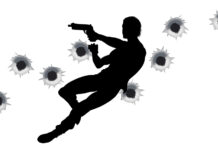


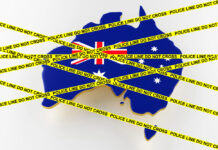


![Are Compensators Worth It? [Video]](https://preparedgunowners.com/wp-content/uploads/2025/07/Depositphotos_815431992_S-218x150.jpg)




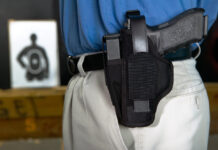
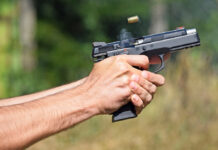
![Would-Be Robber Takes The Tueller Drill Challenge [Video]](https://preparedgunowners.com/wp-content/uploads/2025/10/Depositphotos_50626839_S-218x150.jpg)
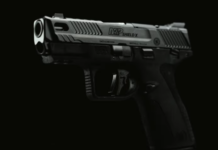
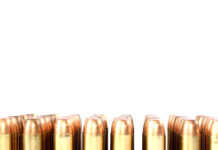
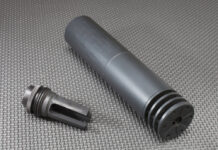
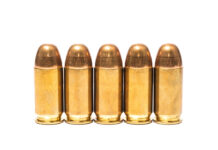

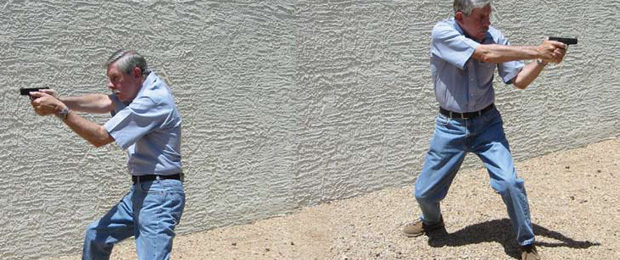


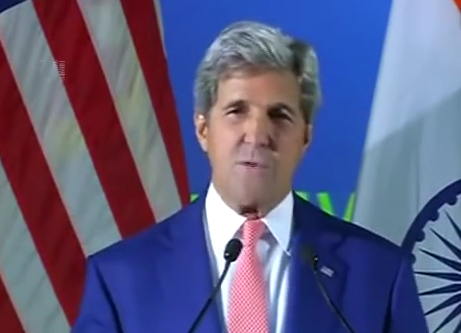

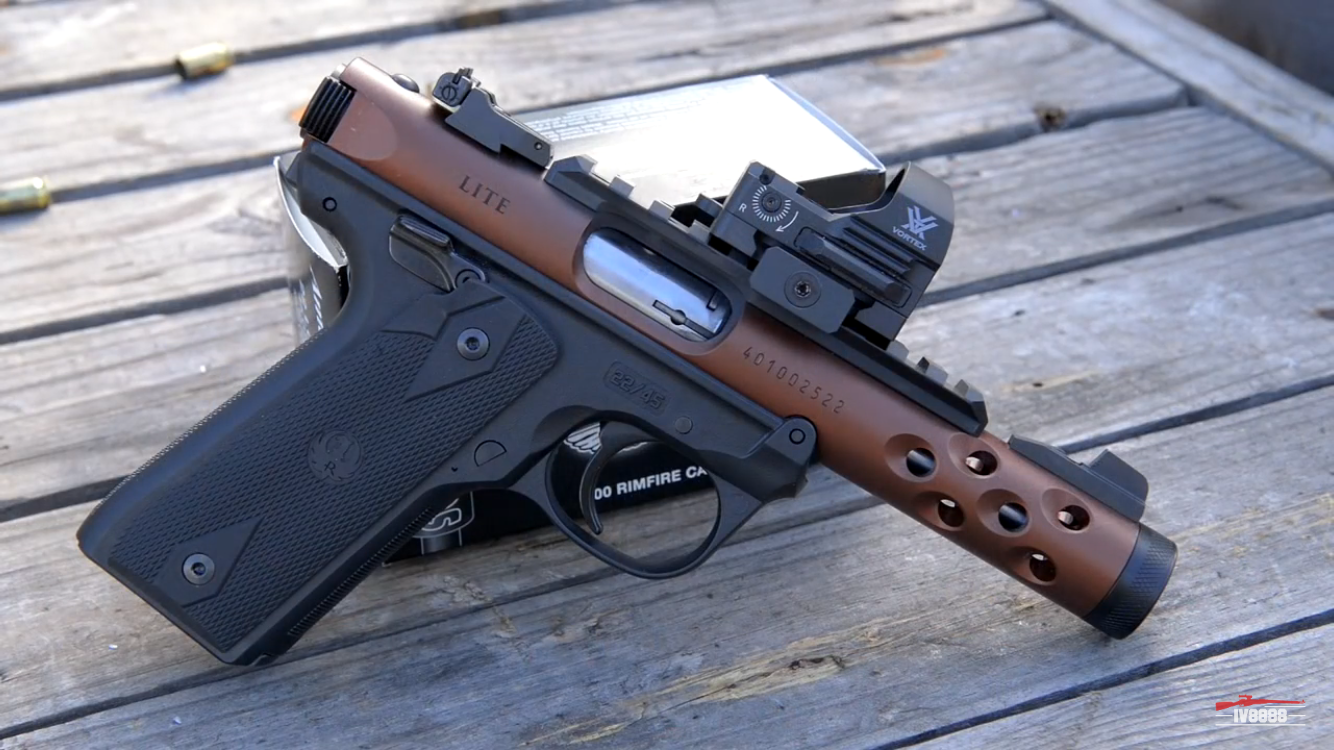





![Optic Ready vs Milled slides? [Video]](https://preparedgunowners.com/wp-content/uploads/2024/02/image-3-100x70.png)
![[Checklist] What Gear You Need To Take Pistol, Rifle & Shotgun Training Courses [Video]](https://preparedgunowners.com/wp-content/uploads/2023/07/Depositphotos_275087632_L-100x70.jpg)
![What is in Carter’s 2023 EDC? [Video]](https://preparedgunowners.com/wp-content/uploads/2023/07/Depositphotos_146856137_L-100x70.jpg)



My father never let me use the sights on my gun (rifle, shotgun, or pistol) when shooting with him. All shooting was done with the point method. I was only allowed to use sights when target shooting from a rest position. We would shoot pine cones in trees, spent 22 cases, and shotgun hulls. By the time I was a teenager, I could easily hit 1″ wood cubes thrown in the air with revolver or rifle. Small game was easily collected (deer, at that time were not common in our part of Georgia). Later in life I learned to use sights, particularly when hunting deer and silhouette shooting; but, when pressed, I rely on what I learned early in life. People I’ve completed against often remark on my consistency. Of interest is that I never lacked for ammunition with which to practice (many people, law and military, paid my father in ammunition). I believe that people should be taught all manners of shooting and how to choose which is most appropriate for their situation.
Very cool Jim. thanks for chiming in.
As a young teenager I had learned to shoot killdee in the air by point and shoot with my Marlin 39A 22 but dime/quarter size targets at 50 to 100 + feet were aim, hold your breath an squeeze. I believe it is all about training and individual skill. By the way I’ve been shooting or attempting to for only about 65 years. I am 68. Train up a child to respect and use all God gives him.
Sometimes if we do the sight style only we will miss in a point shoot as we get our “hunting the sight” overrunning our shoot reflex. I figure it is best to adept to all types of shooting. (Throw the movies gun laying sideways shooting, as with gangs,) out the window. You will miss with is style almost every shot.
One thing I did learn later in life was the drop to stiff arm, fire with a Ruger Blackhawk .357 at 100 yards. When I tried aiming, I would miss the bulls-eye most the time. (Come close but not in it.) But when I was just goofing off, I found when I stood sideways to the target, elbow with gun, bent up at 90 degrees or so, then looked at the bulls-eye, and dropped my arm to a dead lock of the elbow, and fired. It seemed to hit the bulls-eye 9 out of 10 times. Perhaps it was reflex action allowing the brain to direct the gun? Don’t know for sure, but found it to be a very reliable method of one handed shooting.
I typed out a comment, but do not see it posted. Does it come on later?
My second attempt after saying error leave valid email address. I am a Nam vet and I agree sight and shoot works well for me as a sniper but was taught in 60 the point shoot method and has worked well for me as well.
My dad taught me to shoot. He always used only his right hand because his left was crippled. So that is the way I learned to shoot. Right hand, arm extended and turned sideways. I hit the target dead center every time. When I started going to classes taught by local police they had me shoot with the two handed method. I still hit the target every time, and dead center 9 times out of 10. I no longer shoot the way my dad showed me but I still find it to the be most comfortable for me. I’ve practiced point and shoot a couple of times with the police, but don’t do as well as sight and shoot. Thanks for the video and the article.
My dad taught me to shoot using a revolver and the one hand sight and shoot method with the right arm extended, standing sideways arm extended from the right side. I. always hit the target dead center. In 1977, I started taking gun classes with the local police. They had me do the two handed sight and shoot method. I still hit dead center 8 or 9 times out of 10 and hit the critical kill area every time. While I actually prefer the one handed sight and shoot from the side position I now use the two handed sight and shoot method. I have tried the point and shoot method a couple of times and hit the target about half the time. I prefer the sight and shoot method. I have shot automatics many times, but prefer a revolver for my personal self-defense as well as target shooting. Thanks for posting the video, and for all of the articles on shooting.
as usual you’ve got it about half right do you have a part time news job?any way i was taught to point shoot in the fifties with a bee-bee gun and was knocking down ducks as a 10 yr old,it continued with bee-bee pistols which are cheaper to shoot (yea i know ,duh!)and i could practice in the back yard,i started with tin can lids tossing them in the air looking and shooting ,graduated in about a week to washers (50 cent size)then short time later to alka-seltzer tablets then to bayer tabs all at 10 to 15 feet away tossed 8/10 feet high ,the rate of progress is rapid and surprising more so with young shooters,who seem to pick it by instinct(in fact it was called instinct shooting technique when i went in the army in 1971 ,and had to learn the very same bee-bee gun style (8 hrs range time) before we could draw ammo ,of course this is the same army that trained us for the republic of viet-nam in the snow in simulated villes filled with fake hootches so what do they know huh??got me!,1st i say gun up to eye level is a must hip-shooting hits are dumb luck at best ,that front sight will come with the natural human form of pointing index finger ,i get good 1st hits with 1 hand ,but follow ups take the recoil ride, so two hands is not a bad technique with shoulders and elbows absorbing recoil to keep you on target,two handed 1st shots take a fraction longer but are more reliable for the novice,i’m not saying one handed is better just a little quicker,and should be practiced as with the point/instinct shooting myself i’ve evolved to the front sight for close in stuff 30 ft. or so and have good results but point shooting found my front-sights for me basically ,what’s the old adage” front sight in a fight”and so i think your theory bassackwards learn point/instinct 1st sight acquisition 2nd because it falls into place with practice (we learn by doing )
Point Shooting at close range, such as three yards to five yards, is effective, and can be practiced. Federal Law Enforcement Agencies have done it for years. This re-invention of the wheel by people to sell something is getting tiresome. If you look at the rudimentary sights on a Colt Navy, tell me that Wild Bill did not use some effective Point Shooting. This ALL Or Nothing attitude rather than a blended approach is, once again, tiresome.
Point Shooting can be effective and practiced at close ranges, three to five yards. I and others did it for years in the Federal Government. This constant re-inventing the wheel in order to sell something is tiresome. If you look at the rudimentary sights of the Colt Navy, don’t tell me that Wild Bill did not do some point shooting. Quantrill’s Riders and other such units who depended on multi-shot revolvers from horse back did point shooting sometimes, I guarantee it. Rather than this tiresome attitude of either or, one size fits all, it should be a blended approach, use the tactics and training that fits the situation.
put a gun made by jm browning in my hands and i dont need sights out to about 5 yards….or in a swamp with white tails when they jump…
back when I was much younger my buddy and I would walk through his woods and point shoot at what ever target got called out tin cans mostly, when done with practice this can be a very accurate way to shoot but the use of sights can be more pinpoint, unfortunately most people will be too shaken when stressed during a confrontation to use their sights, know how to point shoot could save your life, practicing with both methods is always a good bet
point shooting is something that some people are born with, it is very hard to learn to a level that is safe to depend on
It becomes confusing between sighted and [point shooting]. Some experts state that keep both eyes open. this way you can see if there are other people coming at you from your blind side. I do not think that this topic will ever be resolved. Just practice both. keep safe.
It’s not confusing …
You keep both eyes open as much as possible. When you need more precision (for most people … past 15yds) then you close one eye). That’s about it.
Top “Grand Master” shooters can probably shoot from 25yds+ both eyes open and quicker than if you took bullseye aim. It’s simply practice.
[…] […]
[…] The same line of reasoning can be used for sights. Is point shooting a thing? Yes. Is someone that is properly trained with their sights going to be better at point shooting than someone who only practices point shooting? Yes. If you want to read more into this, please check out this excellent write up HERE. […]
I must be old school. I was taught and use still, front sight, front sight, front sight. Point and shoot to me is for cowboys on the street. Not saying it doesn’t work as I am sure it does, just not for me.
As a LEO in a large City( 5 million) we are trained singled handed point shooting from the hip. In fact, we have to qualify using this method with each hand. FBI stats show over 90% of shootings are within 10 feet. We train at 3 yrds, have to qualify and practice to the point it becomes muscle memory. Under the stress of having to pull your gun your adrenalin is pumping and your brain doesnt have time to think about anything but what you have been trained to do. This training has saved several of our officers. If you wait and take your approach you are wrong, you should practice both!!! If a suspect is less than 10 feet he can lunge at you in 1/2 second. You need to be practicing this as this is how most real shootings really go down.
Its is unwise to say if you can sight shoot then you can point shoot because you will not have practiced and under stress you wont be able to do it with instinct and muscle memory with the stress of the situation. All law enforcement that I am aware of still train like this. Sights if distance and circumstances dictatate, but if you dont train one handed point shooting from the hip your really not going to be ready for all situations. You should practice both. You might be surprised how instinctive it is!!! You started pointing at things since you were 1-2 yrs old. I see so many “experts”today teaching things that are only going to ingrain bad habits and not be ready for real life encounters!!!!
Hi Jake, my articles are mainly from an armed civilian perspective. Your data from the FBI on 90% of shootings happening within 10 feet is correct in applying to LEO’s (where the data comes from) because LEO’s have a duty to get CLOSE to suspects in order to perform their job (handcuff, arrest, interact, etc) whereas the typical armed civilian has no such duty and most defensive gun uses appear to happen within 3-5 yards (the “talking range” where many “stick ups” and other violent crimes occur–about the length of a family sedan away).
All that said, “retention shooting” as you describe is a very valuable skill and if you have time practice all of the above. My only point with the article is that learning to shoot with the sights will enhance your point shooting whereas point shooting will not enhance aimed shooting. Thanks!
I disagree, I see a lot of civilian shootings, domestic, gang, armed robbery, car jacking, drug deals, etc. Almost all of them occur less than 10 feet( most less than 5 feet). You should practice both. Don’t understand why anyone would not practice both. Why not be ready and have that muscle memory for the most likely situation you will find yourself? I have first hand experience in every kind of shooting scenario, I know what I see. I hate to see internet experts discourage real life survival skills including situational awareness, etc.
Over 63 years of shooting, 40 years in competitive shooting, I’ve used point and shoot, full sight shooting, one hand and off hand. I believe that even in point and shoot, the sights are used to some degree. If from nothing other than repetitive sight acquisition, the body automatically assumes the position required in three point sighting, thus making the point and shoot method much more accurate, especially at close range. Also, the advantage of repetition creates a more clear sight picture at longer distances. My daily routine is 7, 25 and 50 yards. My hands shake a bit more these days so I’m not as accurate as I once was. This will be my last year in competition. Getting old sucks. But, I still love to shoot. I’m fortunate to live a round a mile from the Rockcastle Shooting Facility and 25 minutes to a nice indoor range.
Great comment. Thanks!
I agree with the author on the concept that if a person practices sighted firing, point shooting becomes second nature, but not vice versa. It is a horrible trend that in the law enforcement community we are training officers to shoot without using their sights simply because statistically the majority of officers do not remember using their sights. That is just as bad as training/qualifying officers at close range distances because “statistically” that’s where most shootings will occur. Shooting at close range and without using your sights is extremely simple, even a monkey could do it. All the fundamentals can be neglected and you can still get hits on target. It’s simply feel good training, officers pat each other on the back at the end of the day and tell each other, “Great job!” But as soon as the distance is increased to 10+ yards it all goes to shit, and you hear these officers claiming, “Oh, but in a real gunfight I will never be this far away from my target.” Throw in movement, physical stress, and adverse shooting positions and the results are even worse. How many videos haven’t we seen of shootings happening from car to car on a traffic stop? Easily 10 yards. Many of these gunfights are mobile, with the officer and suspect running around the vehicle fighting for their lives. There are many examples of officers having to engage in longer distance gunfights, even if statistically this number is relatively small. Why not hammer the fundamentals (such as sight alignment) and prepare all officers for the worst case scenario, so that they can be prepared for any situation that may unfold? I am still learning (and always will be), but I am happy to have achieved a level of competence where I can engage a 2/3 IPSC target at 50 yards with my handgun if need be. Lining up my sights is natural, simply part of the draw. The sights can never not be aligned because when I draw my weapon they always come up to my line of sight in the position I need them to be. Dry firing, competition, and plenty of law enforcement training or self-paid training with top shooters in the country have gotten me to this point. I don’t think it’s about a lot of practice, it is simply practicing correctly. Hopefully my statements will not be misconstrued. What I am saying is that we should train for the most difficult gunfights we may find ourselves in, so that when the close range ones happen we can do so effortlessly.
I was taught to point shoot, when i was 12 years old, my father a marine and later a allegheny county
police officer taught me on a 45,1911. at 71 years old i still can hit 5 out of 7 jugs of water at 7 to 10
yards drawing from the side and firing as weapon reaches midway to ribcage. I still cary my dads Remington
rand 1911. Thank you for the article .
Respectfully
Jeff
Even marginally-trained law enforcement attempting to make some use of their sights out-perform point shooters by a wide margin.
Comparing Fairbairn and Sykes self-reported results (everyone taught to point shoot exclusively) to the NYPD SOP 9 report results from 1971-2011 (officers taught to use their sights and only 44% reporting they remember doing so) found NYPD to be 242% more effective.
Full report:
https://firearmusernetwork.com/point-shooting-vs-sight-shooting-handgun-training-effectiveness/
When you know you suck – NYPD is 242% more effective at shooting than you lol
Thanks for chiming in John, love your blog 🙂
This author is full of shit. Col. Copper back in the day said, a real pistolaro will know all 4 fighting techniques and point shooting is one of them. The only reason he stops pushing it ,is because him and weaver came up with the modern technique and were selling it to the government. In the beginning Col. Copper was a big advocate of instinctive shooting. But I guess politics and money change everything huh.
Yeah politics and money… OR… no point shooter in the history of ever can out-shoot the best pistol shooters that use the sights on their guns.
Comments are closed.